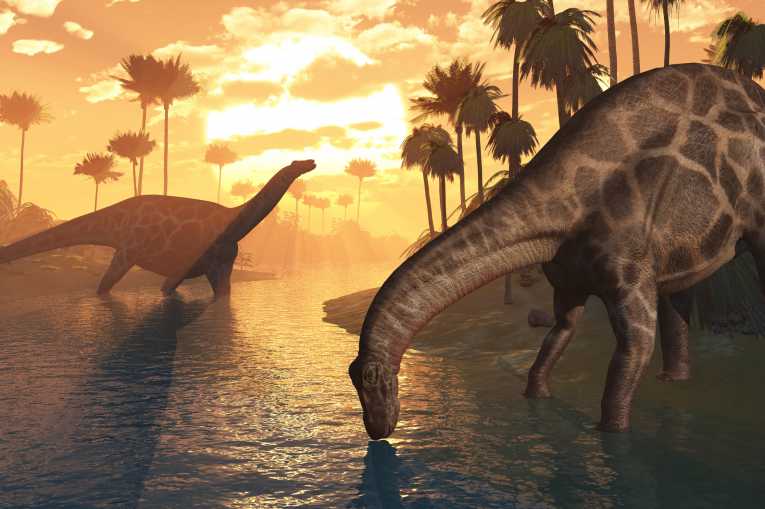There is a long established and almost universally accepted belief that the age of the plant-eating dinosaur came to an end somewhere between 65.5 and 66 million years ago.
There continues to be speculation as to why this should have come about, but one of the favourite explanations is that debris from a giant meteorite impact blocked out the sun and caused extreme climatic conditions, killing off vegetation worldwide.
Researchers from the University of Alberta have cast shadow of doubt on this timescale after they examined a fossilised hadrosaur bone that was discovered in New Mexico. Investigation indicated that this femur bone is only 64.8 million years old.
If this is correct, it means that 700,000 years after the mass extinction event that many palaeontologists believed was responsible for wiping all non-avian dinosaurs off the face of the earth, this particular plant eater was still alive and kicking.
University of Alberta researcher Dr Larry Heaman of the Department of Earth and Atmospheric Sciences and his colleagues used a new direct-dating method called uranium-lead (U-Pb) dating. This process uses a laser beam to unseat minute particles of the fossil, which then undergo isotopic analysis.
The advantage of this new technique is that not only does it determine the age of the fossil bone, but potentially it can also distinguish the type of food the dinosaur was eating. Living bone contains very low levels of uranium, but during fossilisation, which typically occurs less than 1000 years after death, bone is enriched in elements like uranium.
Over a period of time the uranium atoms in bone spontaneously decay to lead and once fossilisation is complete, the uranium-lead clock starts ticking. The isotopic composition of lead determined in the hadrosaur's femur bone is therefore a measure of its absolute age.The generally accepted way of dating dinosaur fossils is to use a technique known as relative chronology. The fossil's age is estimated relative to the known age of layers of sediment above and below the fossil-bearing horizon. However, is not easy to get an accurate age for sedimentary rocks and this weakness is compounded by the fact that fossils may have moved as a result of erosion or a number of other factors.
Dr Heaman and his research colleagues say that there could be a number of reasons why the hadrosaur survived while other dinosaurs didn't. For instance it is possible that in some areas the vegetation was not completely wiped out, allowing a number of hadrosaur species to hang on for a little longer.
Another suggestion is that dinosaur eggs might have been able to survive during periods of extreme climatic conditions and researchers say that is an area well worth exploring.
But maybe the hadrosaurs didn't last for longer; Dr Heaman and his colleagues believe that when more fossil samples are tested with the new uranium-lead dating technique it is extremely likely that the traditional date of the mass extinction of dinosaurs will have to be revised.










